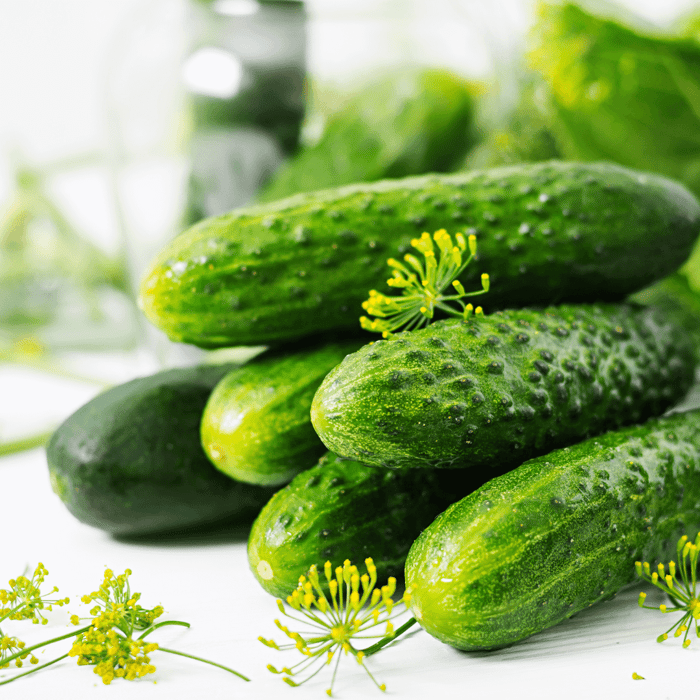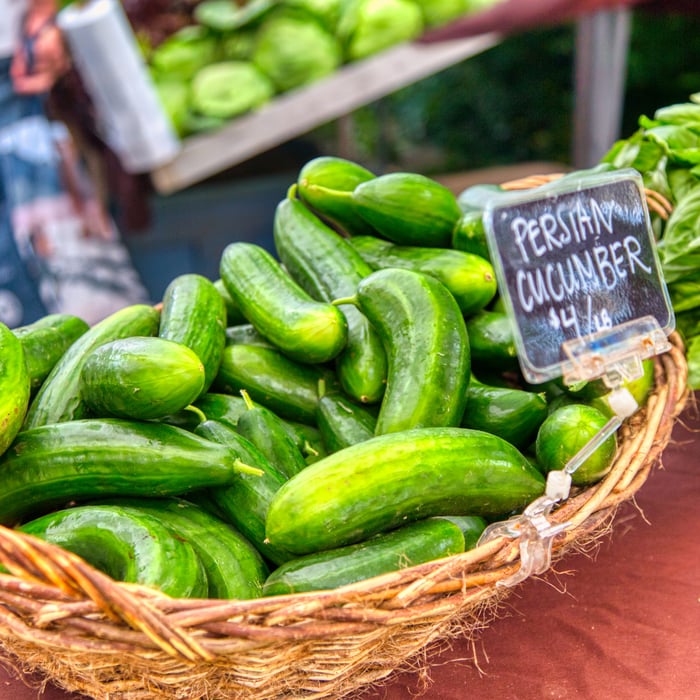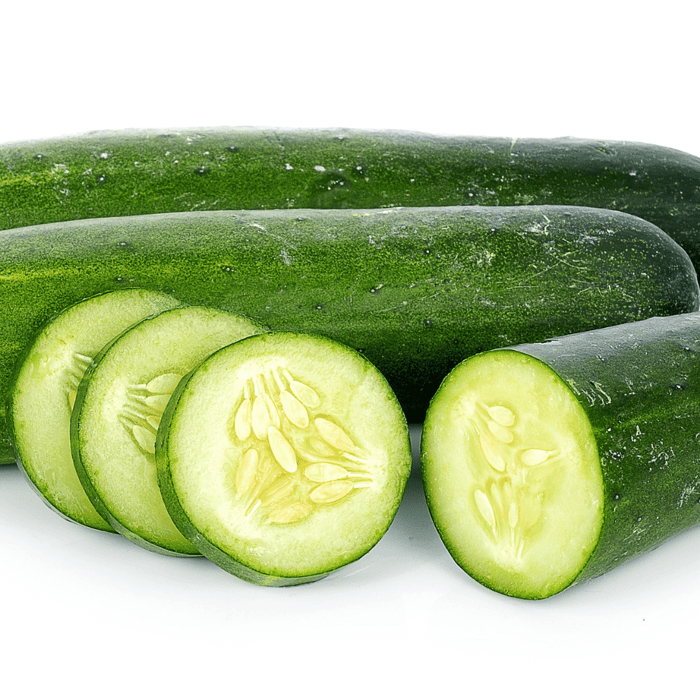Growing cucumbers in raised beds are an excellent way to produce high-quality and healthy plants. A raised bed provides a controlled environment for better drainage, soil temperature regulation, and beneficial root systems. Here's a guide on how to grow cucumbers in a raised bed, from selecting the suitable variety to harvesting your crop.
Choosing the Right Cucumber Variety
Before growing cucumbers in raised beds, you must decide which cucumber variety you want to plant. There are two main types of cucumbers:
- Slicing cucumbers are more giant, thicker-skinned ones often used in salads and sandwiches.
- Pickling cucumbers are more petite, thinner-skinned ones typically used for making pickles.
Some cucumber varieties are bushing, meaning they grow in a compact, bush-like shape, while others are vining, meaning they grow long vines that need to be trellised. When selecting a cucumber variety, consider the growing season, climate, and available space in your raised bed.
Starting with High-Quality Cucumber Seeds
Starting with high-quality cucumber seeds is critical to growing healthy plants. Heirloom seeds are a great choice because they are open-pollinated and produce plants with unique characteristics. When buying cucumber seeds, ensure they are fresh and stored correctly.
Cucumber Seed Assortment | 5 Variety Pack
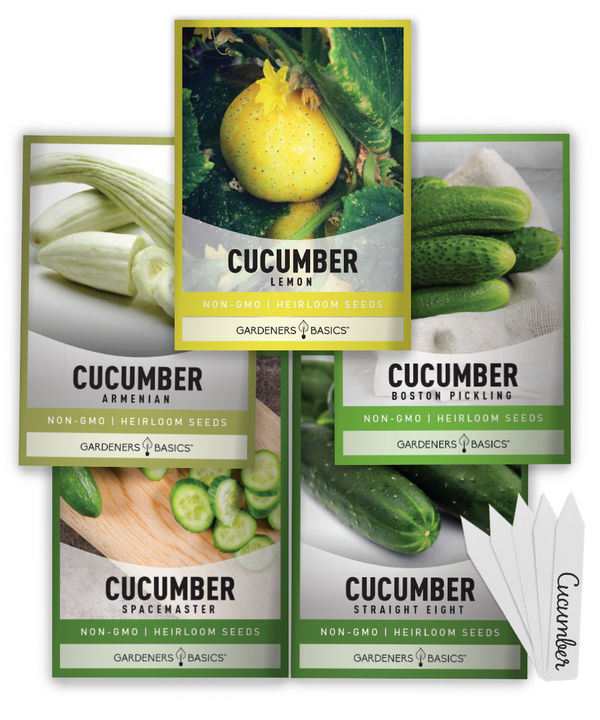
$9.95
Heirloom Cucumber Seeds Variety Pack – Perfect for Pickling, Slicing, and Fresh Eating Introducing our 5 Cucumber Seeds Variety Pack, the ultimate choice for gardening enthusiasts seeking to grow fresh, delicious cucumbers in their own backyard. This premium seed pack… read more
Germinating Cucumber Seeds
Cucumber seeds germinate best in warm soil, with a temperature range of 70-85°F (21-29°C). To germinate cucumber seeds, follow these steps:
- Fill a seed tray or small pots with a seed-starting mix.
- Plant the cucumber seeds 1 inch deep.
- Keep the soil moist but not waterlogged.
- Place the tray or pots in a warm, sunny location.
- Seeds should germinate in 7-14 days.
We also have a complete guide on starting cucumbers from sources.
Planting Cucumber Seeds in a Raised Bed
Once the cucumber seeds have germinated and grown their first true leaves, it's time to transplant them to the raised bed. Here are the steps:
- Choose a sunny location for the raised bed.
- Prepare the soil by adding organic matter and fertilizers.
- Ensure the soil temperature is at least 60°F (16°C) before planting the cucumber seeds.
- Plant the seedlings 12 inches apart in 24-36 inches apart rows.
- Water the seedlings thoroughly and regularly.
Trellising Cucumber Vines
If you are growing vining cucumber plants, you must trellis them to support their growth. Here are some trellising options:
- A-frame trellis: Two stakes or poles are set into the ground and connected at the top, forming an A-shape. Cucumber vines are trained to climb up the frame.
- Cattle panel trellis: A sturdy panel made of wire mesh is set up vertically, and cucumber vines are trained to climb the trellis.
- String trellis: A series of strings attached to stakes or poles and run horizontally between them. Cucumber vines are trained to climb up the lines.
Dealing with Pests and Diseases
Cucumber beetles and powdery mildew are two common pests and diseases that can affect cucumber plants. Here are some tips on how to prevent and treat them:
- Cucumber beetles: These small, yellow, or black beetles can be controlled with insecticides or using row covers to prevent them from reaching the plants.
- Powdery mildew: This fungal disease appears as a fine white coating on the leaves. It can be prevented by maintaining good air circulation around the plants and avoiding overhead watering. If powdery mildew does appear, you can use a fungicide or a natural solution, like a mixture of water and milk, to control it.
Another common disease that affects cucumbers is bacterial wilt. This disease is spread by cucumber beetles and can cause the plant to wilt and die. Unfortunately, bacterial wilt has no cure, so prevention is critical. Use row covers to protect the plants from cucumber beetles and remove any infected plants immediately.
Marketmore 76 Cucumber Seeds
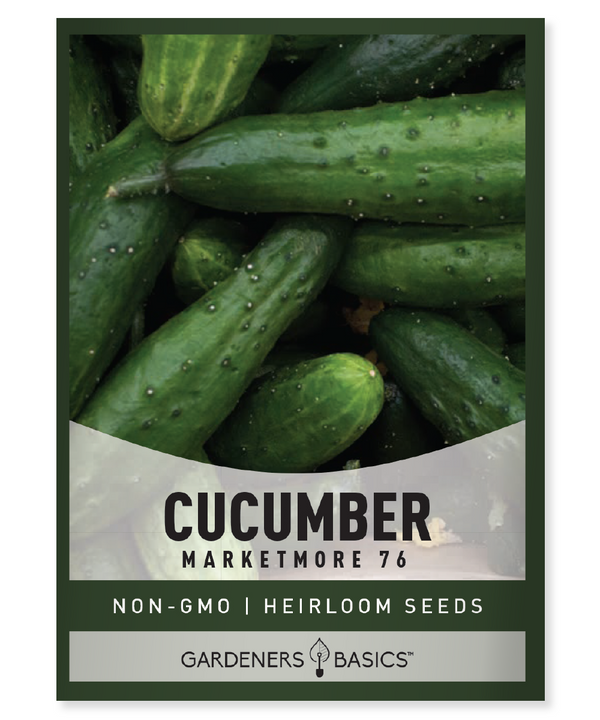
$2.49
Marketmore 76 Cucumber Seeds - Heirloom, Non-GMO, Non-Hybrid, Open-Pollinated Looking to grow delicious, crisp, and reliable cucumbers? Our Marketmore 76 Cucumber seeds are the perfect choice for home gardeners and growers! These heirloom seeds are non-GMO, non-hybrid, and open-pollinated, ensuring… read more
Harvesting Cucumbers
Cucumbers are ready to be harvested when they reach their full size and have a firm texture. This is typically when slicing cucumbers are 6-8 inches long, while pickling cucumbers are ready when they are 2-4 inches long. Check your plants regularly and harvest the cucumbers before they become overripe or too large.
To harvest cucumbers, use a sharp knife or garden shears to cut the stem just above the cucumber. Be gentle when handling the plant, and avoid pulling or twisting the cucumbers, as this can damage the plant and reduce future yields.
Maintaining Healthy Plants
To maintain healthy cucumber plants in your raised bed, follow these tips:
- Water regularly: Cucumbers need consistent moisture, so water them regularly, especially during hot, dry weather.
- Fertilize regularly: Cucumbers are heavy feeders, so be sure to fertilize them every 3-4 weeks with a balanced fertilizer.
- Prune regularly: Remove dead or diseased leaves and prune any extra growth to maintain the plant's shape and promote air circulation.
- Rotate crops: To prevent soil-borne diseases, rotate your cucumber crop every year and avoid planting cucumbers in the same spot for more than one year in a row.
FAQ
1. Can I grow cucumbers in a small raised bed?
You can grow cucumbers in a small raised bed if you choose a variety that fits the space and trellises the plants to save space. Bushing cucumber varieties are an excellent option for small raised beds.
2. What is the best soil for growing cucumbers in a raised bed?
The best soil for growing cucumbers in a raised bed is well-draining, fertile, and rich in organic matter. A mix of equal parts compost, peat moss, vermiculite, or perlite is a good option.
3. How often should I water my cucumber plants in a raised bed?
Cucumber plants in a raised bed need consistent moisture, so water them regularly, especially during hot, dry weather. Water deeply once or twice a week, depending on the weather and soil conditions.
4. How do I prevent cucumber beetles from damaging my plants?
You can prevent cucumber beetles from damaging your plants by using row covers to keep them away from the plants or applying an insecticide that is safe for cucumber plants. Another option is to plant your cucumbers later in the season, as cucumber beetles are more active in the early season.
5. Can I grow cucumbers in a raised bed without trellising them?
You can grow cucumbers in a raised bed without trellising them if you choose bushing cucumber varieties that do not require trellising. However, vining cucumber varieties need support to keep the fruit off the ground and prevent disease.
Beit Alpha Cucumber Seeds
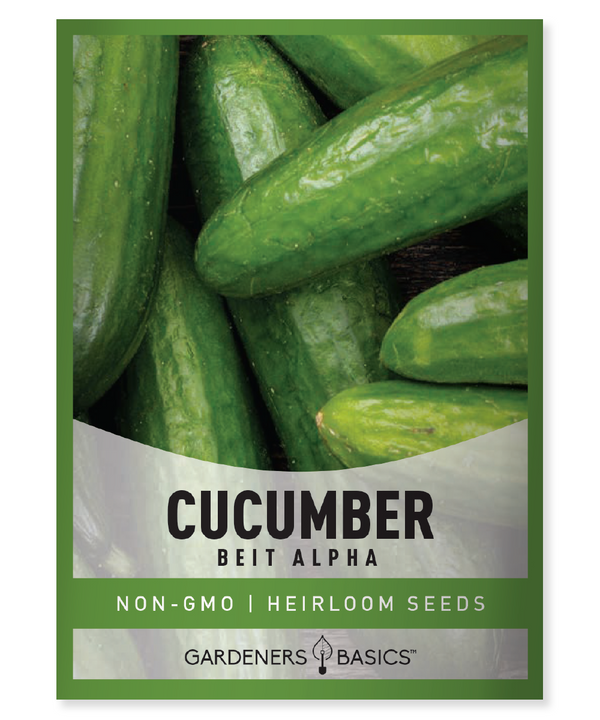
$2.49
Beit Alpha Cucumber Seeds - Heirloom, Non-GMO, Non-Hybrid, Open-Pollinated Grow delicious, crisp, and sweet Beit Alpha cucumbers in your garden with our premium, heirloom-quality seeds. These high-yielding cucumber plants are a favorite among gardeners for their smooth, thin skin, seedless… read more
6. How long does it take for cucumbers to mature?
Cucumbers take about 50-70 days to mature, depending on the variety and growing conditions. Be sure to check your plants regularly and harvest the cucumbers when they reach their full size and have a firm texture.
7. Can I reuse the soil in my raised bed for growing cucumbers the next year?
You can reuse the soil in your raised bed for growing cucumbers the following year, but it's important to rotate your crops to prevent soil-borne diseases. Try planting a different crop in the raised bed for a year before planting cucumbers again.
8. How do I know when to fertilize my cucumber plants in a raised bed?
Fertilize your cucumber plants in a raised bed every 3-4 weeks with a balanced fertilizer. You can also monitor the plants for signs of nutrient deficiencies, such as yellowing leaves or slow growth, and adjust your fertilizer schedule accordingly.
9. How do I control powdery mildew on my cucumber plants in a raised bed?
Powdery mildew can be controlled on cucumber plants by maintaining good air circulation around the plants and avoiding overhead watering. If powdery mildew does appear, you can use a fungicide or a natural solution, like a mixture of water and milk.
10. Can I grow cucumbers in a raised bed year-round?
Cucumbers are warm-weather plants and do best in temperatures between 70-85°F (21-29°C). Depending on your climate, you may be able to grow cucumbers in a raised bed year-round with the use of a greenhouse or high tunnel. However, most gardeners grow cucumbers during the warm growing season.
Final Thoughts
Growing cucumbers in a raised bed is a fun and rewarding way to produce healthy, delicious fruit. You can enjoy a bountiful harvest of fresh cucumbers all season by choosing a suitable variety, starting with high-quality seeds, and following good growing practices. Be sure to monitor your plants for pests and diseases, and take steps to prevent and treat them as needed. You can have a thriving cucumber crop in your raised bed garden with a bit of care and attention.



